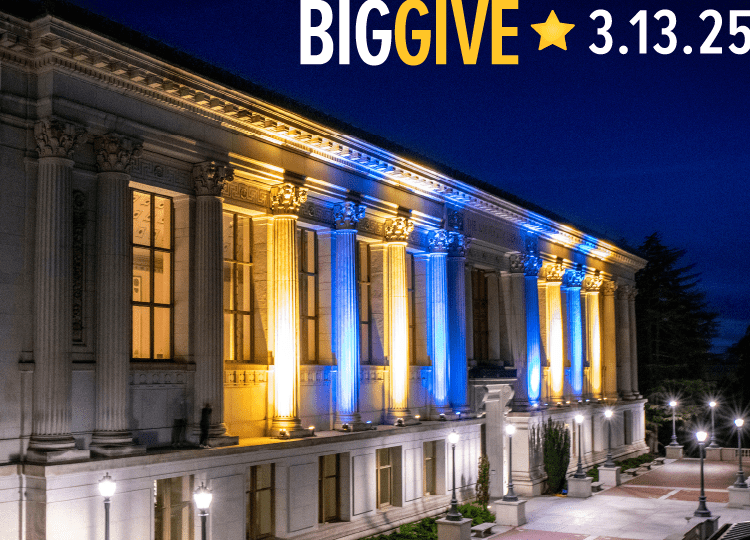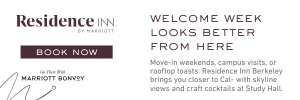Religious leaders gather to challenge notions of “Who is a Jew?”
Rabbi Capers Funnye, the spiritual leader of Beth Shalom B’nai Zaken Ethiopian Hebrew Congregation in Chicago, doesn’t look Jewish—at least to some Jewish eyes. “When someone comes into a synagogue, the last thing you’re supposed to ask them is ‘Are you Jewish?’ Well, if I’m here on a Saturday, and I’ve got this book in my hand, how about just assuming I’m Jewish?”
Well, at least he sounds Jewish.
Funnye (pronounced fun-AY) was raised in the African Methodist Episcopal Church, one the nation’s leading black religious denominations. When Funnye was 17, the minister at his church noticed his gift for public speaking and asked him if he was interested in becoming a preacher. The question got him thinking about religion and set him off on a spiritual quest that led not to Christian ministry, but to rabbinical school.
The rabbi was one of 80 ethnically diverse Jewish leaders who gathered at a San Francisco hotel this spring for the Be’chol Lashon International Think Tank, a six-year-old project sponsored by the Institute for Jewish and Community Research. Be’chol lashon is Hebrew for “in every tongue,” and the meeting lived up to its title with participants from 15 countries, including Uganda, France, Slovakia, Ethiopia, Hong Kong, Colombia, Cuba, India, Portugal, and Spain.
Check your “Chosen people” stereotypes at the door. Some of these folks were born Jewish and some converted. Some among them urge the Jewish community to offer up its religion to any and all shoppers in today’s increasingly competitive spiritual supermarket. That’s a radical departure from the general understanding of Judaism as a religion that prohibits proselytizing. Cal alum Gary Tobin, Ph.D. ’75, Think Tank participant and president of the Institute for Jewish and Community Research, believes it’s time for his people to get over the idea that “Jews don’t do that.” This year’s invitation-only gathering was devoted to the issue of conversion, which has bitterly divided the Orthodox, Conservative, and Reform branches of Judaism.
Conversion stories like Rabbi Funnye’s stir up both hope and discord within the Jewish establishment in the United States, Israel, and around the world. Various Jewish sects and religious denominations have markedly different answers to the question, “Who is a Jew?” The Orthodox follow matrilineal descent (you’re Jewish if your mother was Jewish), while the Reform movement posits a more inclusive definition. That has created a situation in which many children born into mixed-faith Reform marriages are not considered “real Jews” by Orthodox Jewish leaders—including the Israeli rabbis deciding who has “the right of return” to the Jewish homeland.
Traditionally, most conversions come from the marriage of a Jew and a Gentile, after the couple decides to raise their children in the Jewish faith. But a growing number of converts are “Jews by choice,” spiritual seekers who adopt the faith through a personal religious or philosophical revelation. In recent years, some Reform movement leaders have urged that Judaism be open to those who are not formal members of any religious group, people who are “spiritual, but not religious.”
Tobin is one such outspoken advocate. He would like to see Jews actively market themselves and reach out to spiritual seekers. “The Jewish community should be committed to outreach and growth,” he said. “Instead of 14 million Jews in the world, there should be 50 million. Instead of 6 million Jews in the United States, there should be 12 million. And there would be if we were open to denominational switchers and seekers like every other religion.”
Other conference attendees, such as Rabbi Rigoberto Emmanuel Viñas, see themselves as returning, not converting. Viñas, a first-generation Cuban American, is from a family known as the isleños, Spanish colonists who came to the Caribbean via the Canary Islands. The isleños called themselves Catholic, but they had some unusual family customs—quirky practices they did not share with outsiders. “Our grandmothers were always in charge of arranging our marriages. There were certain families that we could marry and certain families that we couldn’t marry. Our grandmothers knew, and they passed it down. We were never to tell a true confession to a priest. My grandmother lit candles on Friday night. We did not eat meat and milk together. Imagine a Cuban family that didn’t eat pork! When we came to America my father saw for the first time people lighting Friday night candles, and he remarked to my mother, ‘Isn’t that amazing. People here do publicly what we only do in secret.’ They didn’t know these things were Jewish.”
Viñas came to see that his family was among countless “crypto-Jews” who fled the Spanish Inquisition of the late 15th century, many of whom eventually wound up in the New World. Today, Viñas is the spiritual leader of the Lincoln Park Jewish Center, a modern Orthodox congregation in Yonkers, New York, and founder of El Centro de Estudios Judios Torat Emet, a Jewish spirituality and learning center for Spanish speakers. He also publishes a quarterly bilingual newspaper, Torah Tropical, which circulates its message of “Judaism with a Latin Flavor” in the United States.
For Rabbi Funnye, the African-American convert from Chicago, the path to Jewish conversion began with his pastor’s suggestion that he become a preacher. “It got me to start looking at the world through different lenses,” he recalled. “In the church, so much is put into the divinity of Jesus, and that grew more problematic. It seemed to limit the availability of God if everything was directed to one individual or one group of individuals. Then there was the issue of Easter, of resurrection. Who’s in charge for three days if Jesus and God are connected as One? Was God dead for three days? Who’s running the world? Those were the kind of questions coming up in my young mind.”
It was the late 1960s and Funnye started looking around at the other spiritual options. He checked out the Pentecostal churches and then the Black Muslim movement, but nothing seemed to fit. Then he stumbled across an African American–Jewish movement founded in 1919 as Commandment Keepers, one of several organizations started in that era by blacks in the United States who saw historical and experiential evidence linking them to the Twelve Tribes of Israel and the centuries-long plight of the Jewish people. Bible passages that told of the Israelites being scattered all over the world by slave ships and forced to worship alien gods resonated with Funnye.
Tobin understands how Judaism could appeal to people from disparate cultures. “Judaism as a religion and culture is interesting, intriguing, hopeful,” he said. “You get a history, a language, a culture, ritual, tradition. You get a country. You get two countries! You get a remarkable theology. You get all that. To horde it is self-defeating.” And he has little patience for the perennial lament by mainstream Jewish leaders obsessed with intermarriage and a decline in religious observance in recent generations. His wife, Diane Tobin, founder and director of Be’chol Lashon, was raised in the Episcopal Church.
“In the 1930s, the vast majority of Americans thought Jews were not suitable marriage partners,” he said. “Today that number is down to about 5 percent. Jews are desirable marriage partners, not undesired. That is such a blessing. To complain about it is perverse.” Gary and Diane were sitting in their offices across the street from Golden Gate Park, talking about the project, when their 10-year-old son walked into the room. The Tobins adopted a newborn African-American baby, named him Jonah a decade ago, and brought themselves face-to-face with an issue Gary had been studying his entire life: the connection between race and religion in U.S. society.
Gary spent two years in Berkeley working on his doctoral thesis in city and regional planning, where he studied the interaction of blacks and Jews in a racially changing neighborhood. He went on to teach and conduct research at Washington University in St. Louis, Missouri, and Brandeis University in Waltham, Massachusetts, before returning to the Bay Area in 1997 to establish the Institute for Jewish and Community Research, an independent think tank devoted to the study of Jewish demography, philanthropy, and religious prejudice. Gary and Diane like to point out that our preconceptions about whether someone “looks Jewish” start to crumble with the most basic research. Just read your Bible. Moses led the Jews out of Egypt. Moses married Zipporah, an Ethiopian. Solomon and David each took a wife from Africa.
Ephraim Isaac, who directs the Institute of Semitic Studies in Princeton, New Jersey, argues that Judaism began as an open, universalistic religion with few barriers to conversion. He was one of several scholars at the conference—including some from the Orthodox movement—who agreed that the Hebrew Bible and early commentaries on Jewish law welcomed people into the fold. Ironically, this “hunger for converts” was only fully embraced by the two world religions that grew out of Judaism: Christianity and Islam, leaders of which would then embark on a centuries-long campaign to systemically repress the religion from which their own belief system sprang. “Judaism would have been the largest religion in the world if Christianity and Islam did not seek to replace it,” Isaac said.
Most Americans, including most American Jews, don’t hold an image of Lewis Gordon in their heads when they think “Jewish person.” Gordon is a professor of philosophy, religion, and Judaic studies at Temple University and the founder and codirector, with his wife, Jane, of Temple’s Center for Afro-Jewish Studies.
“People think to look like a Jew is to look like an 18th-century Polish nobleman, rather than what the ancient Jews really looked like,” said Gordon. He descended through his mother from two Jewish communities. One was the Solomon family, who migrated to the United States from Jerusalem and Egypt in the 19th century, and the other was the Finikin family, who were Irish Sephardic Jews.
“My mother was black and my mother was Jewish,” said Gordon. “Our prejudices of migration make us presume people always wanted to go north. That’s because in recent times the opportunities have been in the north. At one time, the opportunities were in the south. Africa was a vast trade network full of riches. That’s the story of Islam, but not just Islam. Wherever there were Muslim traders, there were Jewish traders, and they settled in communities all over Africa.”
Or, as Ethiopian-born Ephraim Isaac likes to reply whenever he gets the “you don’t look Jewish” line, “Ethiopia is mentioned in the Bible over 50 times, but Poland not once.”



















